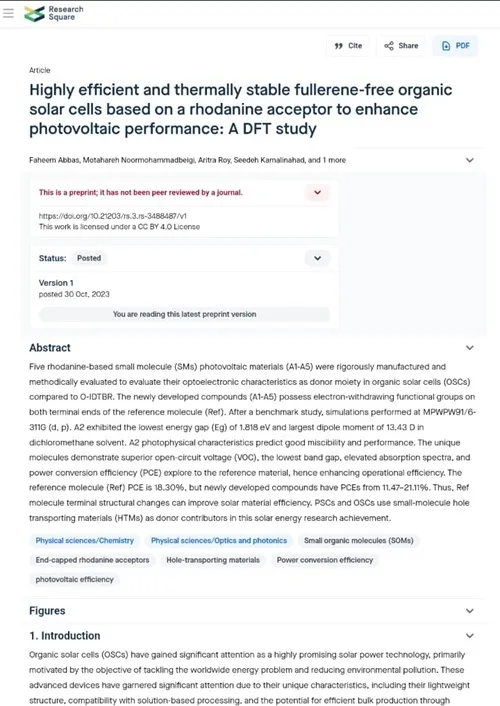Authors
Faheem Abbas, Motahareh Noormohammadbeigi, Aritra Roy, Seedeh Kamalinahad, and Maria Khalid
DOI
10.21203/rs.3.rs-3488487/v1
Abstract
Five rhodanine-based small molecule (SMs) photovoltaic materials (A1-A5) were rigorously manufactured and methodically evaluated to evaluate their optoelectronic characteristics as donor moiety in organic solar cells (OSCs) compared to O-IDTBR. The newly developed compounds (A1-A5) possess electron-withdrawing functional groups on both terminal ends of the reference molecule (Ref). After a benchmark study, simulations performed at MPWPW91/6-311G (d, p). A2 exhibited the lowest energy gap (Eg) of 1.818 eV and largest dipole moment of 13.43 D in dichloromethane solvent. A2 photophysical characteristics predict good miscibility and performance. The unique molecules demonstrate superior open-circuit voltage (VOC), the lowest band gap, elevated absorption spectra, and power conversion efficiency (PCE) explore to the reference material, hence enhancing operational efficiency. The reference molecule (Ref) PCE is 18.30%, but newly developed compounds have PCEs from 11.47–21.11%. Thus, Ref molecule terminal structural changes can improve solar material efficiency. PSCs and OSCs use small-molecule hole transporting materials (HTMs) as donor contributors in this solar energy research achievement.
